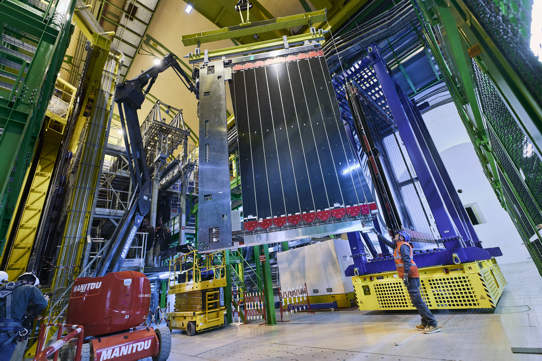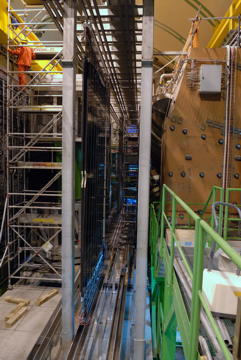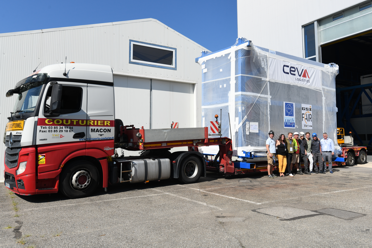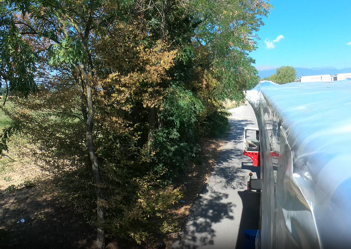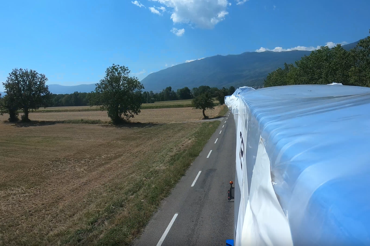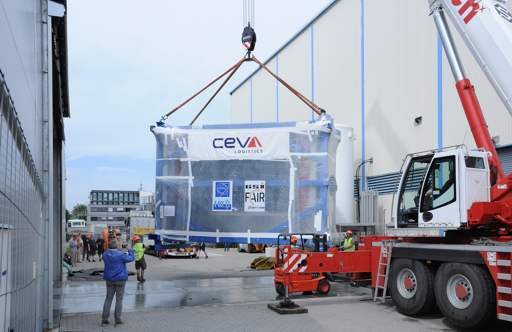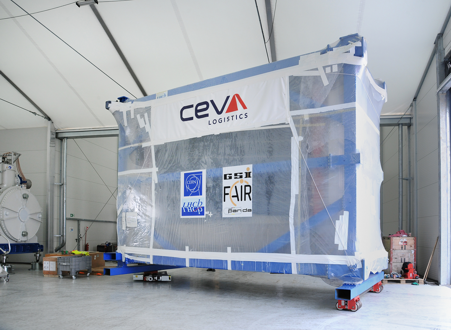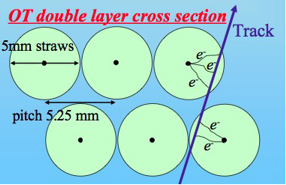The Outer Tracker (OT) is the largest component of tracking system in the original version of the LHCb detector. It was replaced by the Scintillating Fibre (SciFi) sub-detector in the upgraded detector that is taking data in Run 3. The OT was just transported to GSI in Darmstadt, Germany, in order to be used in the PANDA detector at the accelerator facility FAIR and other experiments. The second life of the OT starts now. The images below show the OT in front of and inside the LHCb detector.
The OT was covered with protecting plastic and loaded on a truck at LHCb on August 21 (the image below to the left). The trip carried on throught the french country side near CERN as shown in the two other images below. The OT was then transported to Colmar, where it was placed on a boat and continued its transit on the river Rhine to Gernshein, where it was unloaded. Finally it arrived to GSI on August 25.
GSI operates an accelerator facility for research purpose. The Facility for Antiproton and Ion Research, FAIR, is currently being build there. It consists of a superconducting ring accelerator with a circumference of 1,100 meters, storage rings and experiment sites with several kilometers of beam line in total. The existing GSI accelerators will serve as the first acceleration stage. FAIR will provide particle beams of all the chemical elements (in the form of ions), as well as antiprotons. The PANDA experiment, Antiproton Annihilation at Darmstadt, being constructed at FAIR, will exploit the collisions of antiprotons on protons at rest to create exotic particles consisting of different combinations of quarks and gluons, in order to provide deeper insights into the mysterious strong force.
The photos below show the OT arriving to GSI.
The design of the three Outer Tracker stations is modular. Each of them is built from 72 separate modules supported by four independently moving aluminium frames. A module consists of two panels and two sidewalls, which form a mechanically stable and gas-tight box, and contain up to 256 straw tubes filled with a mixture of argon (70%) and carbon dioxide (30%) gas.
The straw tubes are arranged in two staggered mono-layers and are glued to the panels using a high-precision jig to accurately define the straw tube position and straightness. The panels are made of a Rohacell core reinforced by carbon skins. In addition, the inner panel side has an extra layer of a polyimide-aluminium laminate ensuring gas tightness and electrical shielding.
The straw tubes are wound from two layers of foil material. An inner layer of carbon-doped Kapton (Kapton XC) acts as a cathode for the collection of the positive ions. The outer layer, made of a polyimide-aluminium laminate, provides shielding and together with the anode wire forms a transmission line for the effective transport of the high-frequency signals. By application of a crimped contact on both layers of the straw tube walls, a good and reliable interface with the front-end electronics ground is ensured.
Read more in the CERN update in English and French as well as in the Panda and GSI in English and German press release.

